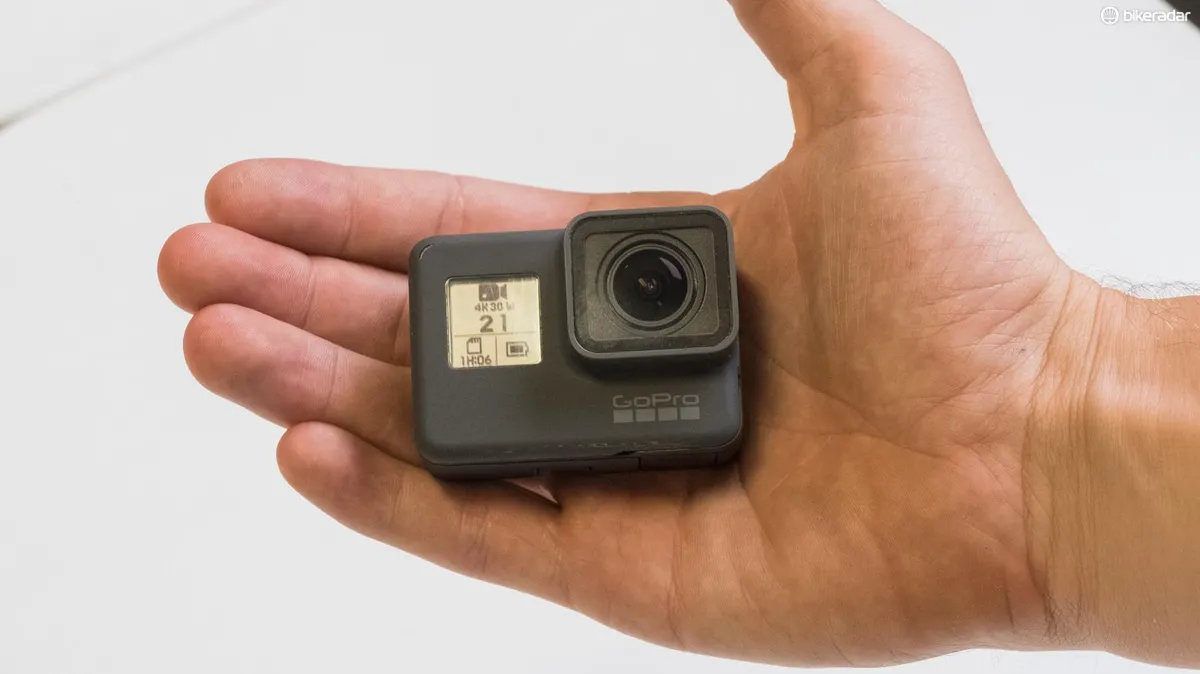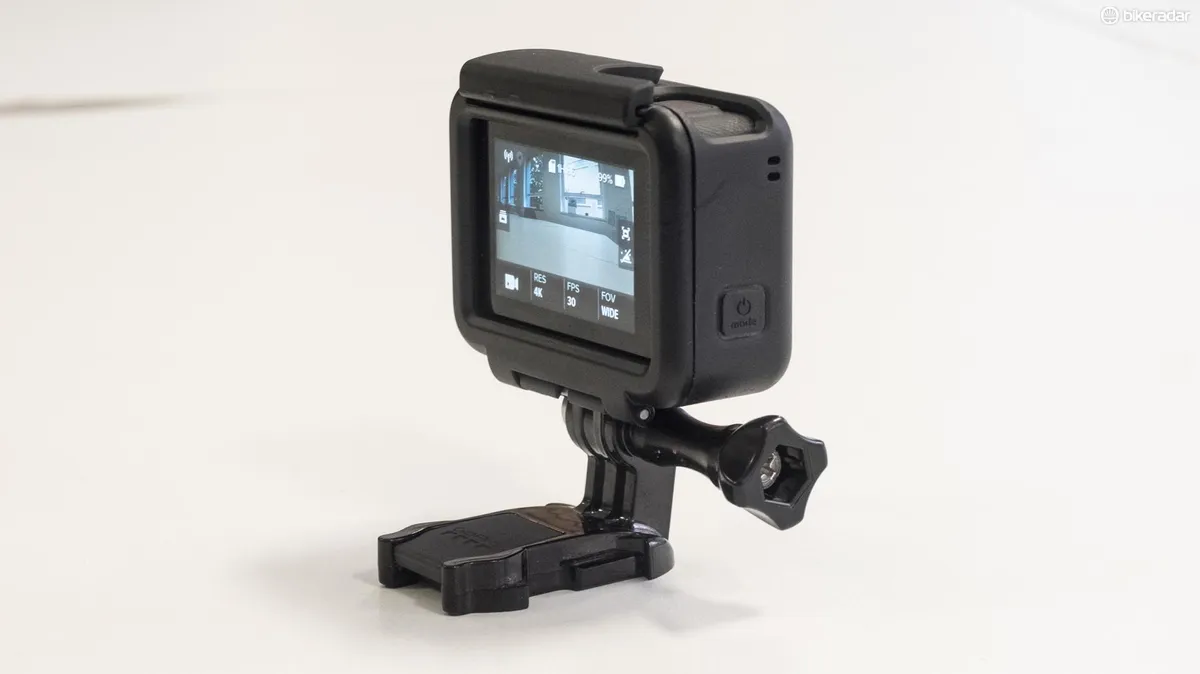After months of speculation, GoPro’s latest and greatest camera, the hotly anticipated Hero 6, has landed in our grubby mitts.
Resident camera-fettler Reuben Bakker-Dyos has spent the morning playing with the new action camera and he's ready to give his first impressions.
BikeRadar videographer Reuben Bakker-Dyos takes the GoPro Hero 6 out on the bike and into the studio
GoPro Hero 6: specs and key features
Before I get into the meat of our initial impressions, here’s a quick rundown of some key features and specs of the Hero 6:
- Same body as Hero 5 Black
- Touchscreen controls
- Voice control
- Waterproof to 10m / 33ft
- Video quality up to 4k at 60fps and 1080p at 240fps
- 12MP resolution still images
- New GP1 processor, designed in-house by GoPro
- Three-axis software stabilization
- £499 / $499
As well as improving performance generally, the frame is now cropped by only five percent when stabilisation is enabled — as opposed to the 10 percent before. So you have a handful more precious pixels to play with.
If you’re shooting at any frame rate above 30fps the Hero 6 will automatically use the relatively new H.265 codec, otherwise known as HEVC.
This new codec is twice as space efficient as the widely used H.264 codec, but requires twice as much processing power to work — something to consider if the machine you edit on already struggles with H.264.
GoPro Hero 6 initial impressions

Physically the GoPro Hero 6 is exactly the same as the 5, and I think that’s a good thing. I’ve come to love the form factor and ease of use of the Hero 5, and even if it does occasionally get stuck in its casing, I think there’s little that could be improved here.

I’ll have a full run down of any drastic changes to the menu structure in my full review, but for the time being there’s little to report here.
Looking at the footage hot out of the camera, mere hours ago, what really stood out was how good the ‘GoPro Colour’ Protune profile option looked — the colours are rich, the image is contrasty and I reckon it will negate the need to manually grade the footage for the vast majority of users.
For those that prefer to manually grade their footage, the ‘Flat’ profile in Protune still produces super high-quality footage.
On the flipside, if you’re after cheap and dirty footage, or if card space has become an issue, turning Protune off still produces reasonably good footage.
The sharpness looks a little high and the transition between daylight and lowlight isn’t particularly smooth, but it’s still perfectly useable — clearly the new GP1 chip is doing a good job.
GoPro’s cameras have often been criticised for lacking what many view as key features, for example, the Yi 4k+ has had 4k 60fps capability for some time now. However, GoPro does have a knack for coming out (eventually) with a camera that’s bang up to date, but also adding something else that we may not have expected — in this case it’s the new 1080p 240fps slo-mo mode.
At ⅛ speed the picture quality is exceptional. While you’ll need a lot of light to make it work well, you’ll be happy with the shots, even on POV shots which can often look a little boring in slo-mo.
Is it worth upgrading to the Hero6?
It’s hard to say whether or not the new Hero 6 is worth the extra £100 / $100 just yet, you’ll need to judge the footage for yourself, but I suspect you won’t be disappointed.
Keep your eyes peeled for a full GoPro Hero 6 Black review here on the site and on our YouTube channel in a few weeks time.
GoPro Hero 6 price and availability
The Hero 6 Black is available for $499 / £499 / AU$TBC on GoPro.com as of 28 September.